
Earl of Perth is a title in the Peerage of Scotland. It was created in 1605 for James Drummond, 4th Lord Drummond. The Drummond family claim descent from Maurice, son of George, a younger son of King Andrew I of Hungary. Maurice arrived in Scotland on the ship which brought Edgar Ætheling, the Saxon claimant to the crown of England after the Norman Conquest, and his sister Margaret to Scotland in 1068. Maurice was given lands in Lennox (Dunbartonshire), together with the hereditary stewardship of the county. The Hungarian Prince theory has been discounted as no evidence of any relationships exists in written records or DNA. "The Red Book of the Menteiths" clearly discounts the Hungarian Prince as a myth likely formed to give status to the Drummond origins. The Drummonds in the 12th century were allied to the Menteiths – their early fortunes developed through the relationship. Indeed, one "Johannes De Drumon", said to have died in 1301, was buried in Inchmahome Priory which was founded by the Menteiths. His successor John Drummond, the 7th Steward, was deprived of the lands and retired into Perthshire.

Robert Wedderburn was a British-Jamaican radical and abolitionist of multiracial descent active in early 19th-century London. Wedderburn was born in Kingston, Jamaica, an illegitimate son of an enslaved Black woman, Rosanna, and Scottish sugar planter James Wedderburn. During his life, Robert Wedderburn sought to reconcile his political priorities and religious views.
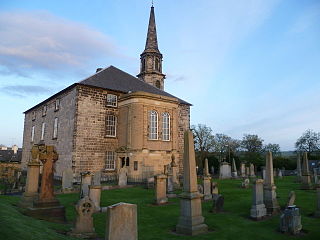
Inveresk is a village in East Lothian, Scotland situated 5⁄8 mi (1 km) to the south of Musselburgh. It has been designated a conservation area since 1969. It is situated on slightly elevated ground on the north bank of a loop of the River Esk. This ridge of ground, 20 to 25 metres above sea level, was used by the Romans as the location for Inveresk Roman Fort in the 2nd century AD.
Andrew Colvile was a Scottish businessman, notable as the governor of the Hudson's Bay Company, a huge organisation set up for the North American fur trade but also instrumental in the early history of Canada. He was also chairman of the West India Docks.

James Hay, 15th Earl of Erroll styled Lord Boyd from 1728 to 1746, was a Scottish nobleman and the son of William Boyd, 4th Earl of Kilmarnock. After his father was attainted in 1746, he became Mr James Boyd, but in 1758 he inherited the Earldom of Erroll from a great-aunt.

John Murray, 3rd Duke of Atholl, KT, PC, known as John Murray until 1764, was a Scottish peer and Tory politician.
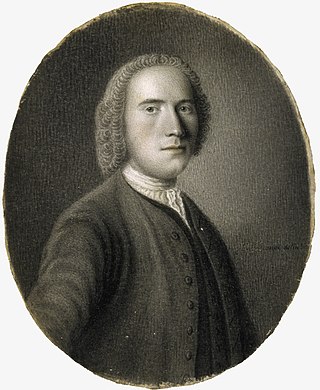
Lord George Murray, sixth son of John Murray, 1st Duke of Atholl, was a Scottish nobleman and soldier who took part in the Jacobite rebellions of 1715 and 1719 and played a senior role in that of 1745.

Jemima Wedderburn Blackburn was a Scottish painter whose work illustrated rural life in 19th-century Scotland. One of the most popular illustrators in Victorian Britain, she illustrated 27 books. Her greatest ornithological achievement was the second edition of her Birds from Nature (1868). Most of the illustrations were watercolours, with early paintings often including some ink work. A few were collages in which she cut out a bird's outline and transferred it to a different background, in a similar manner to John James Audubon. Her many watercolours showed daily family life in the late 19th-century Scottish Highlands as well as fantasy scenes from children's fables. She achieved widespread recognition under the initials JB or her married name Mrs. Hugh Blackburn.

Inveresk Lodge Garden is in the care of the National Trust for Scotland, in the village of Inveresk, East Lothian. The lodge lies about 10 km south-east of Edinburgh, and for over a century was one of the homes of the Wedderburn family.
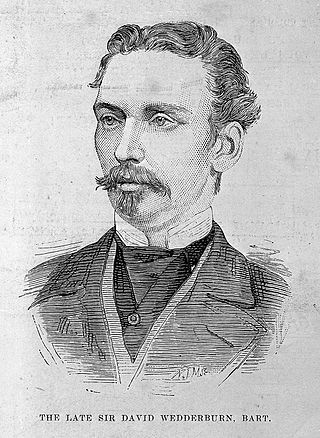
Sir David Wedderburn, 3rd Baronet was a British politician.
David Graeme was a British officer in the Scots Brigade, diplomat and courtier, responsible for carrying George III's proposal of marriage to Charlotte of Mecklenburg-Strelitz.
Dunbar Hamilton Douglas, 4th Earl of Selkirk FRSE was a Scottish peer.
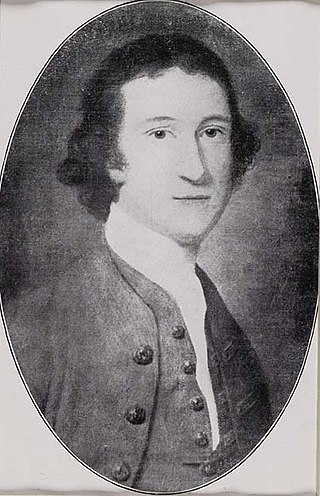
Sir John Wedderburn of Ballindean, 6th Baronet of Blackness (1729–1803) was a Scottish landowner who made a fortune in slave sugar in the West Indies. Born into a family of impoverished Perthshire gentry, his father, Sir John Wedderburn, 5th Baronet of Blackness, was executed for treason following the Jacobite uprising of 1745, and the young Wedderburn was forced to flee to the West Indies, where he eventually became the largest landowner in Jamaica. In 1769 he returned to Scotland with a slave, one Joseph Knight, who was inspired by Somersett's Case, a judgment in London determining that slavery did not exist under English law. Wedderburn was sued by Knight in a freedom suit, and lost his case, establishing the principle that Scots law would not uphold the institution of slavery either. Wedderburn ended his days as a wealthy country gentleman, having restored his family fortune and recovered the title Baronet of Blackness.
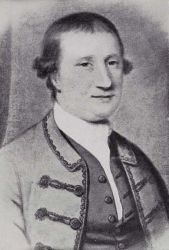
Sir John Wedderburn, 5th Baronet of Blackness, (1704–1746) was a Perthshire gentleman who joined the 1745 rebellion of Charles Edward Stuart. He was captured at the Battle of Culloden, taken to London, and convicted of treason. He was hanged, his estates were forfeit to the Crown, and his family was attainted. The Blackness in his title is Blackness House in Dundee rather than Blackness in Lothian just west of Edinburgh. His son John Wedderburn of Ballindean fled after his father's death to Jamaica, where he re-established the family's fortunes via slave sugar, and eventually regained his father's title.
Robert Rollo, 4th Lord Rollo was a Scottish nobleman and Jacobite.

John Johnstone was a Scottish nabob, a corrupt official of the British East India Company who returned home with great wealth. Described as "a shrewd and unscrupulous business man", he survived several scandals and became a major landowner when he returned to Scotland in 1765.
Sir David Wedderburn, 1st Baronet was a Scottish businessman and Tory politician. He was Postmaster General for Scotland 1823-31 and a member of two London militias before that.

Henry Dawkins was a British politician.
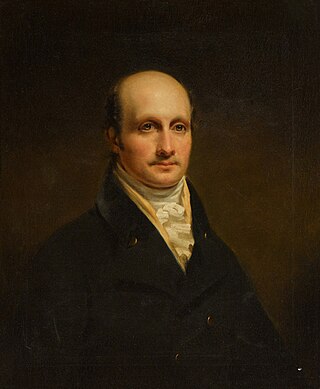
The Honourable James Wedderburn FRSE was a 19th-century Scottish judge who served as Solicitor General for Scotland from 1816, dying in office aged 39. He is sometimes called James Wedderburn-Colville.














